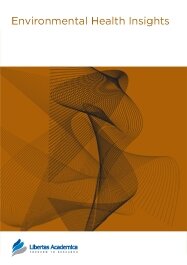

Publication Date: 01 Oct 2008
Journal: Environmental Health Insights

Faculties of Medicine and Health Sciences, University of Western Ontario, London, Ontario, Canada.
Abstract
Background: Evidence is unequivocal that exercise training can improve health outcomes. However, despite this evidence, adoption of healthy lifestyles is poor. The physical environment is one possible determinant of successful adoption of healthy lifestyles that could influence outcomes in community-based intervention strategies. We developed a novel exercise prescription delivered in two different cohorts of older sedentary adults—one delivered by family physicians to patients with identified cardiovascular risk factors (CRF) and the other delivered at a community exercise facility to a larger cohort of healthy sedentary adults (HSA). We then determined whether the place of residence and proximity to facilities promoting physical activity and healthy or unhealthy eating could influence clinical changes related to these community-based exercise prescriptions.
Methods: Two different cohorts of older patients were administered similar exercise prescriptions. The CRF cohort was a sedentary group of 41 older adults with either high-normal blood pressure (120–139 mmHg/85–89 mmHg) or impaired glucose tolerance (fasting glucose 6.1–6.9 mmol/l) who were prescribed exercise by their family physicians at baseline and followed over 12 months. The HSA cohort consisted of 159 sedentary older adults who were prescribed a similar exercise prescription and then participated in a chronic training program over 5 years at a community-based training facility. Out- comes of interest were change in fitness (VO2max), resting systolic blood pressure (rSBP) and body mass index (BMI). GIS-determined shortest distance to local facilities promoting physical activity and healthy versus unhealthy were compared at baseline and follow up using simple logistic regression.
Those subjects in CRF group were further identified as responders (exhibited an above average change in VO2max) and were then compared to non-responders according to their patterns of proximity to physical activity and eating facilities.
Results: In the CRF cohort at baseline, greater GIS-distance to golf courses correlated with higher rSBP (r = 0.38, p = 0.02) while greater distance to bike paths correlated with greater BMI (r = 0.32, p = 0.05). CRF responders who lived closer to a park had higher BMI (r = −0.46, p = 0.05) while no other relationship among responders and proximity to either physical activity or eating facilities was observed. CRF non-responders lived closer to formal physical activity facilities (community centres) and higher fat eating facilities. In the HSA cohort, higher fitness was correlated with greater distance to both formal and informal physical activity facilities (baseball fields or dance studios) while this was also correlated with a higher rSBP (r = 0.17, p = 0.04). In general, physical activity facilities were often located near higher-fat eating facilities regardless of cohort.
Conclusion: Those prescribed exercise by their family physician for the presence of health risk tended to closer to any type of physical activity facility compared to those who joined an exercise program on their own. A positive response to the intervention at 12 months was associated with closer access to informal physical activity facilities while non-responders lived closer to both types of physical activity facility as well as high fat eating facilities. In contrast, healthy chronic exercise trainees in the community did not show any meaningful relation between fitness and proximity to healthy lifestyle facilities. Hence, the access to facilities is not as important to those who adopt physical activity on their own whereas those targeted by physicians may be influenced by access. Furthermore, the response or lack thereof to exercise interventions in those at risk may be influenced by proximity to both physical activity and unhealthy eating facilities.
PDF (1.19 MB PDF FORMAT)
RIS citation (ENDNOTE, REFERENCE MANAGER, PROCITE, REFWORKS)
BibTex citation (BIBDESK, LATEX)
XML
PMC HTML
My experience in publishing our manuscript in Environmental Health Insights was positive. The speed of processing was the fastest of all the journals I have encountered. The peer review and editorial comments were to-the-point and professional. The open reader access greatly enhances article visibility. I would publish again in this journal if I have suitable studies to publish.

All authors are surveyed after their articles are published. Authors are asked to rate their experience in a variety of areas, and their responses help us to monitor our performance. Presented here are their responses in some key areas. No 'poor' or 'very poor' responses were received; these are represented in the 'other' category.See Our Results
Copyright © 2013 Libertas Academica Ltd (except open access articles and accompanying metadata and supplementary files.)
FacebookGoogle+Twitter
PinterestTumblrYouTube